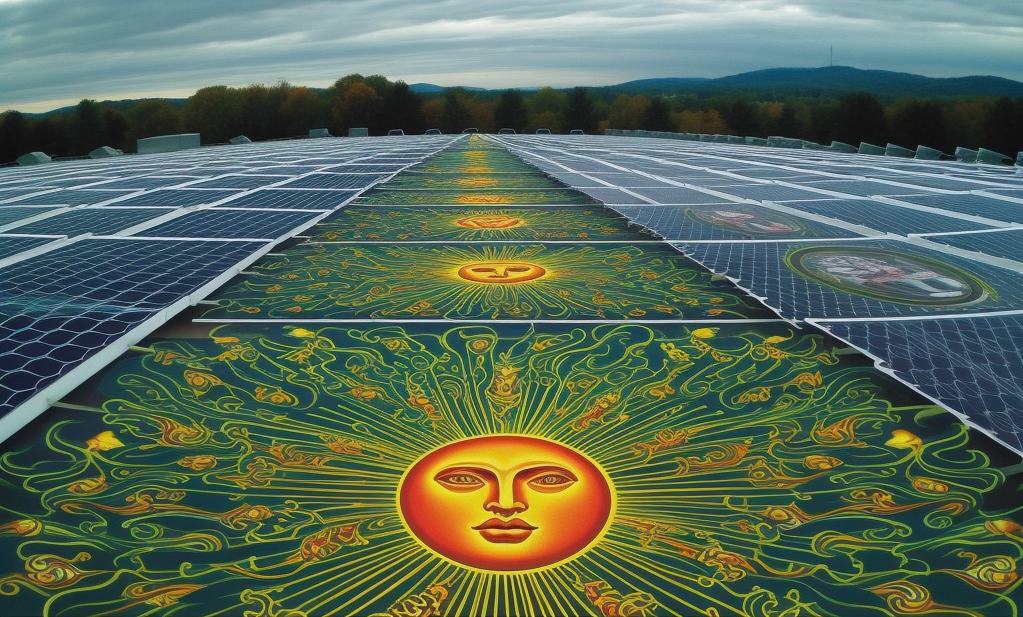

INTELLIGENT ENGINEERING
Debunking Common Myths About Solar Energy
Addressing misconceptions about solar power, such as its efficiency, cost, and environmental impact, using data-driven analysis to provide accurate and reliable information. Today, the writing of this (16th of May) is the International Day of Light declared by UNESCO, celebrating the anniversary of the first successful laser operation in 1960 by physicist and engineer Theodore Maiman. The study of light has led to promising alternative energy sources, lifesaving medical advances in diagnostics technology and treatments, light-speed internet and many other discoveries that have revolutionised society and shaped our understanding of the universe. Solar panel technology first materialised in the 1950s and has significantly advanced since then. While this technology continues to improve, a lot of the stigma surrounding them is stuck in the past. We are taking this opportunity to debunk common myths and misconceptions about Solar Energy:

"Solar cannot function in cloudy weather".
It is true that the sunnier the weather is, the more energy is produced. However, Solar Technology can be leveraged in virtually any condition, including rainy and snowy days, because some sunlight still reaches the earth. Solar panels perform best in cold and sunny climates because heat interferes with the conversion of sunlight into electricity. (Keep in mind that solar panels collect light, not heat.) According to general estimates, solar systems will generate about 25% of their normal power output on a cloudy day.

Improving the capture of solar energy on cloudy days is particularly important to use solar energy on a daily basis
to generate hydrogen (via water electrolysis) for fuel-cell electric vehicles (FCEV), or to charge the batteries of extended-range electric vehicles (EREV)
"Solar is too expensive".
Solar systems have become more affordable over the past years. As an example, solar photovoltaic module prices have fallen by 89% since 2010. Also, new policies and incentives and the rising notion of sustainability and environmentalism have made renewable energies more accessible to more people.
Although the payback periods are long, the savings from the installation cover the costs in 8 years (on average) and, in addition, solar panels require little ongoing maintenance. They are durable and reliable, with an estimated useful life of more than 30 years. Therefore, it is a good investment that will pay for itself after the ninth year on average.
"Solar installations have a big environmental impact."
Solar panel production is currently reliant on fossil fuels and mining for precious metals, which contributes to greenhouse gasses and pollution. However, even with their shortcomings, solar panels are far greener than the alternatives. On average, one 10 kW solar roof eliminates around 4 tons of carbon emissions annually, which is roughly equivalent to planting over 100 trees per year. Solar also produces zero emissions after production, which makes it an essential solution to slowing climate change. And as technology advances, we anticipate that the process of creating solar panels will become even more eco-friendly. In addition, Since they last a long time, they do not need any maintenance, whereas traditional energy solutions require relatively regular replacement, resulting in waste. Solar panels can spend 30 years producing clean and environmentally friendly energy.

Harnessing the sun's rays provides a dependable and lasting energy source that could aid in confronting worldwide climate change. Using solar power lowers carbon emissions and waste compared to conventional power generation.
The myths and misconceptions surrounding solar energy often need to be updated or stem from a lack of understanding of the technology. Solar energy remains efficient in less-than-ideal weather conditions, and while initial costs can be high, the long-term financial benefits are substantial. Furthermore, although the manufacturing process of solar panels does have an environmental impact, the overall effect is far less damaging than traditional energy sources. As technological advancements continue to refine and improve solar energy, it becomes increasingly clear that this is a sustainable, viable, and crucial solution in our global fight against climate change.
Victoria Paz
EPConsult Energies | INTELLIGENT ENGINEERING
More insights:

Hydrogen Challenges and Solutions
Hydrogen, with a history intertwined with the energy sector for over two centuries, is witnessing a remarkable resurgence, particularly as a renewable energy source in the UK's transition from fossil fuels. As the momentum around hydrogen energy grows, so does the question of its safety. While all fuels inherently pose some risks, hydrogen's unique properties, such as a wide range of flammable concentrations and lower ignition energy, necessitate additional engineering controls and careful material selection.

UK's Electric Vehicle Revolution
In a landmark decision that marked the beginning of the UK's Electric Vehicle (EV) Revolution, the UK government announced in November 2020 the cessation of sales of petrol and diesel-fueled vehicles by 2030, and hybrid vehicles by 2035. This unprecedented shift, aimed at significantly reducing the country's carbon footprint, has set the stage for a monumental transition in the transport sector, which accounted for 24% of the UK's total emissions in 2020.

Blowing Away the Carbon
There are several technical and economic reasons that offshore wind power is a viable option for decarbonizing traditional oil and gas production. Firstly, new offshore wind license areas are often located in deeper waters and at greater distances from the coast. Once land is reached, these sites are still far from potential markets. These logistical factors drive up the cost of delivering power to onshore users.

From Coal Mines to Clean Energy
The commitment to net zero has impacted all sectors, promoting the need for low-carbon technologies. Around the UK, a vast number of decommissioned facilities are standing disused in previous industrial hubs, and this will only become more common over the coming years as more and more carbon-polluting facilities are closed. More recently, there has been research and investment on how these sites could be used to develop renewable energy sites.

Riding The Waves of Energy
The ocean is a vast playground of untapped energy. Waves, created by the wind's interaction with the water's surface, hold immense potential. Wave energy, also known as ocean wave power, aims to capture this power and convert it into usable electricity. It's like harnessing the ocean's natural heartbeat to power our world. The energy held within the world's waves is the most significant unused power source on the planet, with the total energy potential globally believed to reach a staggering 30,000 TWh per year. To put this into perspective, that's tenfold the European Union's total annual electricity usage.
- Log in to post comments
